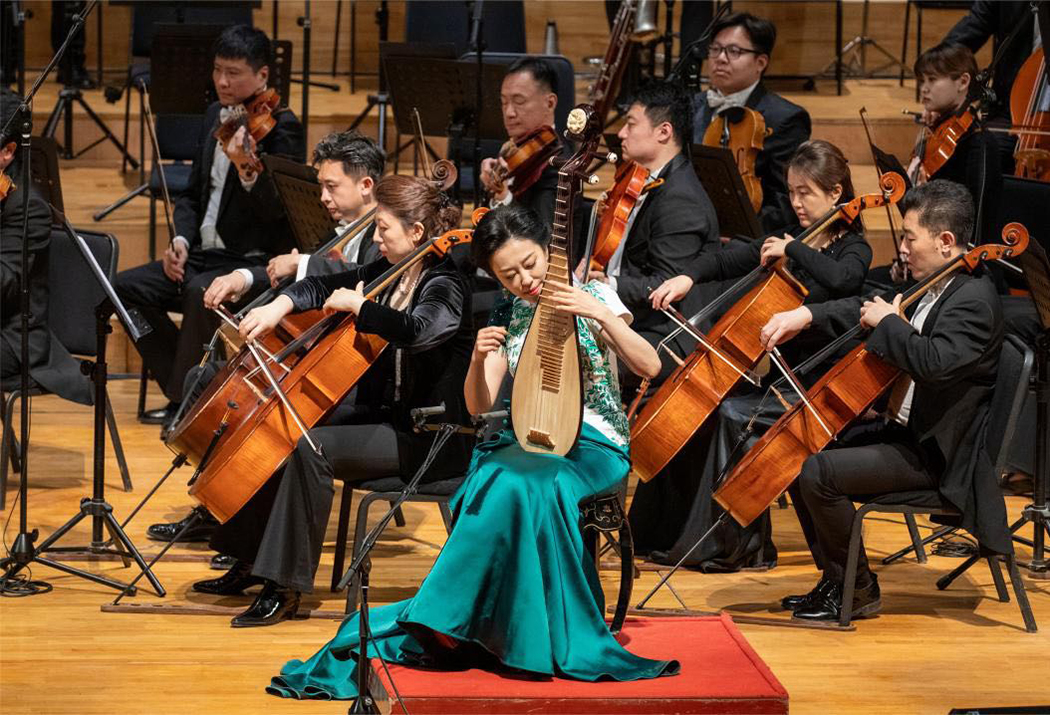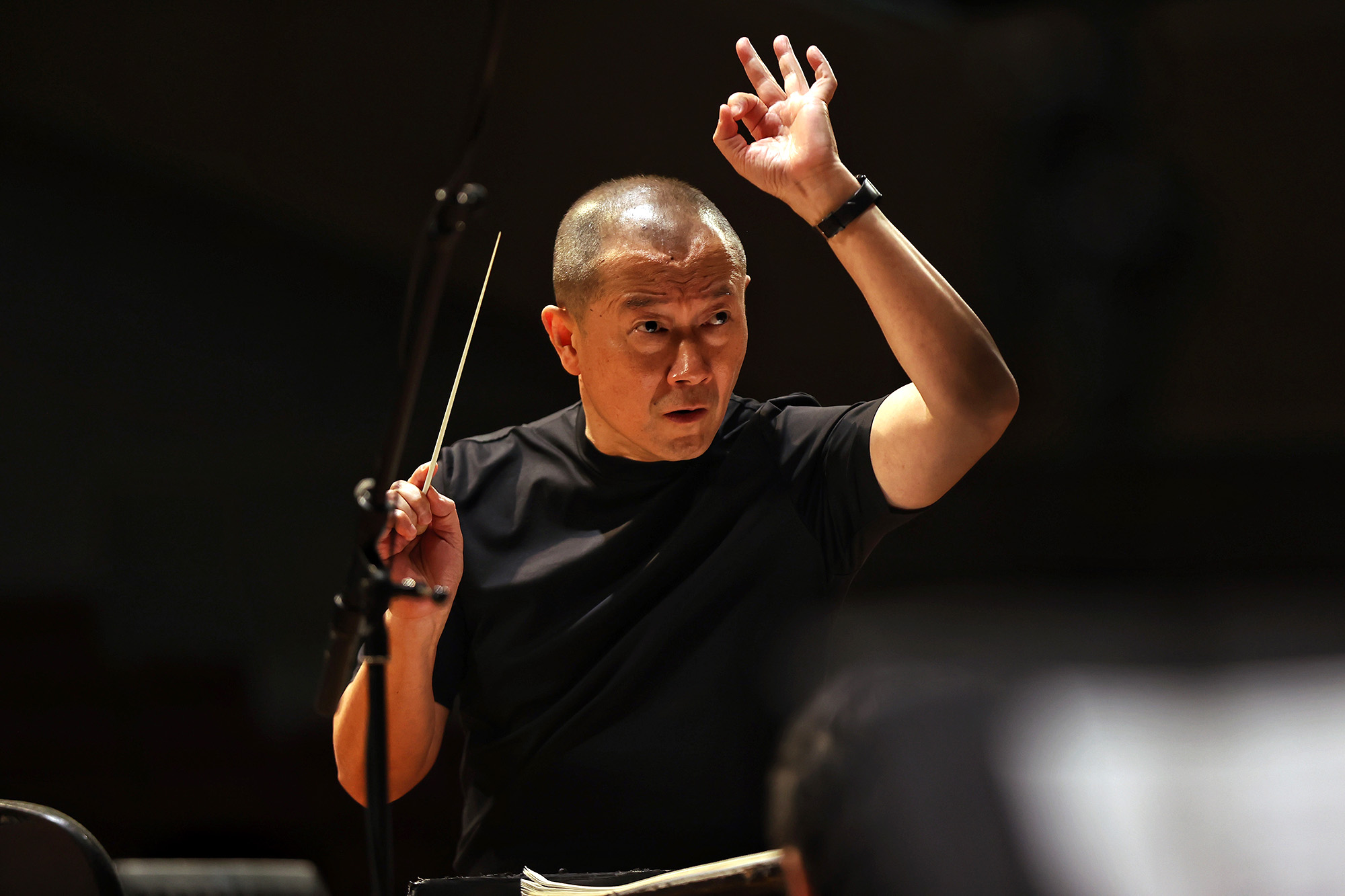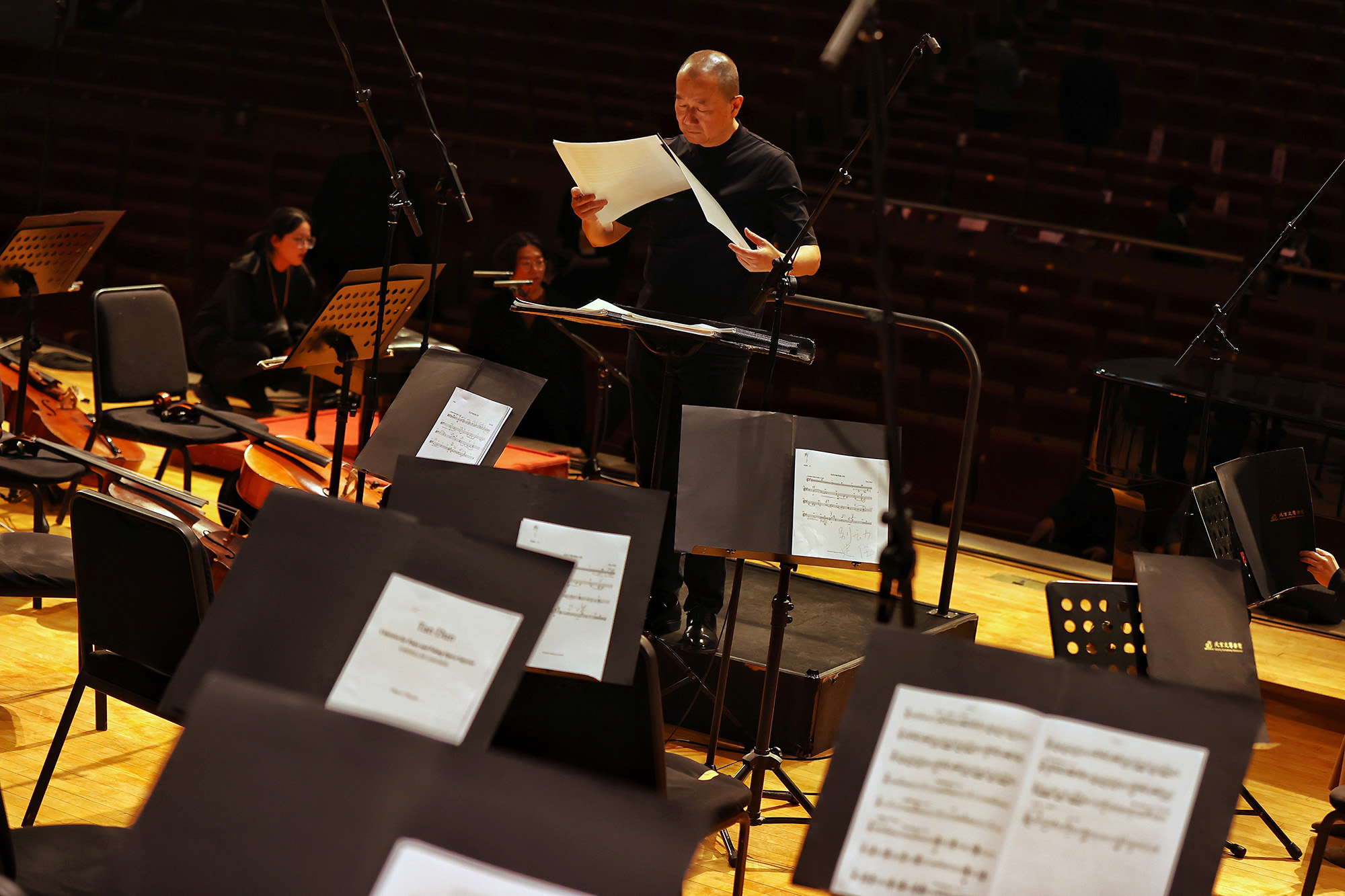Composer reveals how the sights and sounds of the capital's Central Axis inspired a new piece, Chen Nan reports.

In 1973, the Philadelphia Orchestra became the first orchestra from the United States to perform in China since the founding of the People's Republic of China in 1949. Tan Dun, then a teenager living in the countryside of Hunan province, heard broadcasts of these historic concerts — his first time listening to any orchestra — which changed his life.
Enchanted, Tan decided to pursue his new-found passion for classical music. Before that, he mostly listened to folk songs from his hometown in Changsha. He also learned to play traditional Chinese musical instruments as a child and joined a local ensemble that performed at funerals and weddings.
In 1977, Tan's dream of learning classical music was fulfilled when he left his hometown and came to Beijing to study composition and conducting at the Central Conservatory of Music. This allowed him not only to be exposed to Western classical music, but also to explore the city, Beijing, which was totally new to him.
"It seemed like coming to a new world," recalls the 66-year-old, who won an Oscar for best original score, which he wrote for Ang Lee's movie Crouching Tiger, Hidden Dragon, in 2000. Tan was appointed a UNESCO Goodwill Ambassador in 2013.
He enjoyed riding a bicycle, wandering through hutong neighborhoods, where people went about their daily lives.
"There were trees, small shops and gray-walled courtyards in those narrow hutong that offered me a great sense of the local community and the unique Beijing culture," he recalls.

When Tan was invited to compose a new piece about Beijing's Central Axis — the 7.8-kilometer north-south line through the historical center of the capital, which generally follows a symmetrical structure — his memories of the city and his younger days at the conservatory came back to him vividly.
On Saturday, the Beijing Symphony Orchestra staged a concert under his baton, premiering his new piece, Ancient Bells of Peking's Central Axis, featuring pipa (a four-stringed Chinese lute) player Zhao Cong. During the concert, which was held at the Forbidden City Concert Hall, Tan also rearranged some of his other pieces, including Farewell My Concubine, which is a double concerto for piano and Peking Opera, and orchestral concertos, Marco Polo, and Rock the Violin in Rhapsody, featuring soloists, pianist Ralph van Raat, Peking Opera actress Xiao Di and violinist Susan Tang.
The Central Axis formed gradually starting in the Yuan Dynasty (1271-1368), when Beijing became the national capital, according to Li Jianping, an expert on Beijing history. The Forbidden City, China's imperial palace from 1420 to 1911, now known as the Palace Museum, is also located along the Central Axis.

On the day of the concert, Tan also organized a daylong program, A Day in Peking's Central Axis. Along with musicians from the Beijing Symphony Orchestra and pipa player Zhao, he visited key historical sites, including Jingshan Park, the Bell and Drum towers, and Yongdingmen Gate, between 6 am and 3 pm, seeing the city at different hours and performing the piece at each location to shoot a video. The day concluded with the concert at the Forbidden City Concert Hall, which is located inside Zhongshan Park, next to the Palace Museum.
"When I wrote the music, I visualized many scenes in my head, such as my days riding a bicycle in the hutong, and the first time that I visited the Forbidden City. This piece is dedicated to Beijing, which is like my second hometown," says Tan, who left the capital after graduating from the Central Conservatory of Music and moved to New York to study at Columbia University, where he obtained his doctorate in musical arts in 1993. Since then, he has had an international career with a series of symphonic works, contemporary operas and film scores, which have been performed in some of the world's most renowned venues, from Milan's La Scala Theatre to New York's Metropolitan Opera House.
Back in 1982, Hong Kong movie director Li Han-hsiang (1926-1996) was preparing for his movie, Burning of the Imperial Palace, which tells the story of Qing Dynasty (1644-1911) Empress Dowager Cixi against the backdrop of the sacking and burning of the Yuanmingyuan, or the Old Summer Palace, by invading Anglo-French alliance forces in 1860. After hearing Tan's first symphony, Li Sao, which the composer wrote in 1979, Li invited Tan, who was still a student of the Central Conservatory of Music, to write the movie's theme song, Yan Yang Tian (Bright Sunny Day).

Tan went by bicycle to visit the director, the first time that he entered the Forbidden City.
"I was overwhelmed by the imperial palace," says Tan. "I had seen the beauty of everyday life in the hutong. The Forbidden City showed me another side of Beijing, which was majestic.
"The music is about celebrating the heritage of the ancient city," he adds. "In some ways, it almost feels like coming full circle. I played Chinese musical instruments at rituals in my hometown, which was also spiritual, dealing with the ever-living spirits."
In the piece, Tan employed two bianzhong (chime bells) of different sizes, placed on either side of the stage. Hung on wooden frames and struck by mallets, the bells opened the piece, like an echo of the past.
"I am always impressed by Tan Dun's musical language and his imagination. This time, he let the pipa and the brass quartet talk musically, portraying ancient Beijing," says Zhao, veteran pipa player, who is also the president of the China National Traditional Orchestra.
Zhao got up at 4 am on Saturday to go to Jingshan Park along with Tan and the musicians of the Beijing Symphony Orchestra. Located in the center of Beijing and facing the north gate of the Forbidden City, Jingshan Park used to be one of the capital's ancient imperial gardens. They climbed up the hill and arrived at the Wanchun Pavilion, which sits on the highest point of Beijing's Central Axis, where they had a great view overlooking the Forbidden City.
"Tan Dun's music is a reflection of his Chinese upbringing and his Western education. In his music, the audience hear him using Western instruments to create all types of sounds," says Li Changjun, president of the Beijing Symphony Orchestra. "We have plans to take this concert to other Chinese cities and abroad, in the hope that more people get to know about the city through Tan Dun's musical portrayal."
Contact the writer at chennan@chinadaily.com.cn


